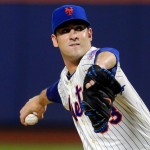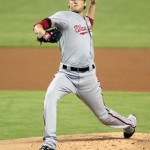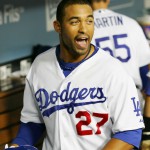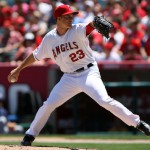We’re on a roll; 5-for-5 so far in predictions for individual games. Lets see if we can keep it going now that all four divisional series are in full swing. Cnnsi probable pitchers are here, along with some good stats.
NLDS Game 2: Pittsburgh-St. Louis: The Pirates are going with young phenom Gerrit Cole while the Cardinals curiously are going with their least effective playoff starter in Lance Lynn. (Side note: I thought Lynn would be left off the playoff roster by virtue of being the 5th best St Louis starter; instead it turns out the Cardinals are moving Shelby Miller to the bullpen for the playoffs, ostensibly because Miller “looked tired” down the stretch. BS: he lowered his ERA during the month of August. How is this not a “shutdown” of some sort, and if so where’s the righteous indignation that followed the Nats shutting down Strasburg in 2012 for a medical reason?). Lynn pitched to a 91 ERA+ on the year, struggled for most of the season but finished strong by posting a 2.82 ERA in September (going against a bunch of also rans for the most part). He pitches significantly better at home, perhaps one reason to get his NLDS start in now before the teams move to Pittsburgh. Lynn has faced Pittsburgh 5 times this year, but more importantly was his last two outings against the Pirates in August. Both times they got to him; 4 runs in 5 innings on 8/15, 7 runs in 4 innings on 8/31.
Meanwhile Pittsburgh counters with its 2nd best pitcher in Cole. Cole’s potential and minor league pedigree are well known to prospect watchers, and his arrival to the majors was heralded as the coming of the next big thing. Oddly though, initially Cole looked mortal; it took him 17 MLB starts before he had a scoreless outing. Like Lynn, Cole vastly improved once September came, capped off by 7 innings of shutout ball he threw at Texas and a 6 inning/12 strikeout outing in late September. To be fair, like Lynn Cole’s September starts were also filled with also-rans.
The Cardinals hit. And they especially hit right-handers (best in the NL in several macro batting categories, including BA, OPS, wOBA and wRC+). Despite my liking Cole, I have a feeling the Cards are eventually going to get to him. Will the Pirates get to Lynn first? I’m betting so; after last night’s beating and emotional letdown, I think the Pirates re-group and take game 2.
NLDS Game 2: Los Angeles-Atlanta: The Braves are in trouble; after getting embarassed by Clayton Kershaw last night they have to go up against a pitcher of nearly the same quality in Zack Greinke. Greinke was hurt early, and struggled to find his form until the season was half over. But now he’s on a roll; he hasn’t given up more than 2 runs in an outing since July 25th. In his last 6 starts he’s given up a total of 7 runs. The Braves are going to have a hard time scoring on him. In Greinke’s only start against Atlanta in June, he pitched 7 shutout innings, giving up just 4 hits. I see a similar outing tonight; perhaps 7 innings giving up 1 or 2 runs and punching out 7-8 guys.
Meanwhile, Atlanta counters with Mike Minor, who hasn’t pitched badly per se down the stretch but certainly hasn’t pitched that dominantly; Atlanta has lost his last 6 starts. However, in two starts against LA Minor has been good. I can see Minor holding the Dodgers at bay and getting this to the bullpens, where Atlanta has the very distinct advantage. I’m predicting a very close Atlanta victory tonight to send it back to LA.
ALCS Game 1: Tampa-Boston: After a disastrous 2012 season, Boston is back and is set to bash their way through the playoffs with its league-best offense. In game 1 Boston throws its ace Jon Lester, who has lowered his season ERA three quarters of a point in the last 2 months going against mostly a solid diet of playoff-calibre and AL east teams. The Rays hit left-handers pretty well (108 wRC+) but Lester has mostly handled them in 4 match-ups this season.
Meanwhile Tampa is hampered by its two play-in games costing them their two best arms. They start the ALDS with their #3 starter Matt Moore, no slouch himself at 17-4 with a 3.29 ERA and 116 ERA+. However Moore is struggling down the stretch; since a fantastic 2-hit shutout in Boston in late August, Moore has finished 6 innings just one time and has had to be taken out of games early due to high pitch counts and unusual wildness (Moore leads the league this year in wild-pitches; very odd considering how well he controlled the ball in the 2011 playoffs). Boston is just as patient a team as Tampa at the plate (they’re #1 and #4 in terms of BB% in the majors), and Boston can wait out Moore to get to Tampa’s fatigued bullpen.
All in all, I think Boston waits out Moore, gets into Tampa’s bullpen and gets a win. Lester holds Tampa at bay and Boston takes game 1.
ALDS Game 1: Oakland-Detroit: Presumed AL Cy Young winner Max Scherzer gets the ball in game 1, going against the ageless Bartolo Colon, who at 40 may have just had his best season (his WAR for 2013 is a full 1.1 wins better than his Cy Young winning season in 2005). Scherzer may be averaging 10 K/9, but the last time he hooked up with Oakland he got beat. Likewise, the last time Colon faced Detroit he shut them down. With Miguel Cabrera hurting and the Tigers offense limping into the post-season, with Scherzer oddly inconsistent down the stretch, and with Colon entering the post-season nearly unhittable (he’s given up just 4 earned runs in his last 5 starts, three of them on solo homers), I think we’re about to see an upset in game 1. I’m going with Oakland.




